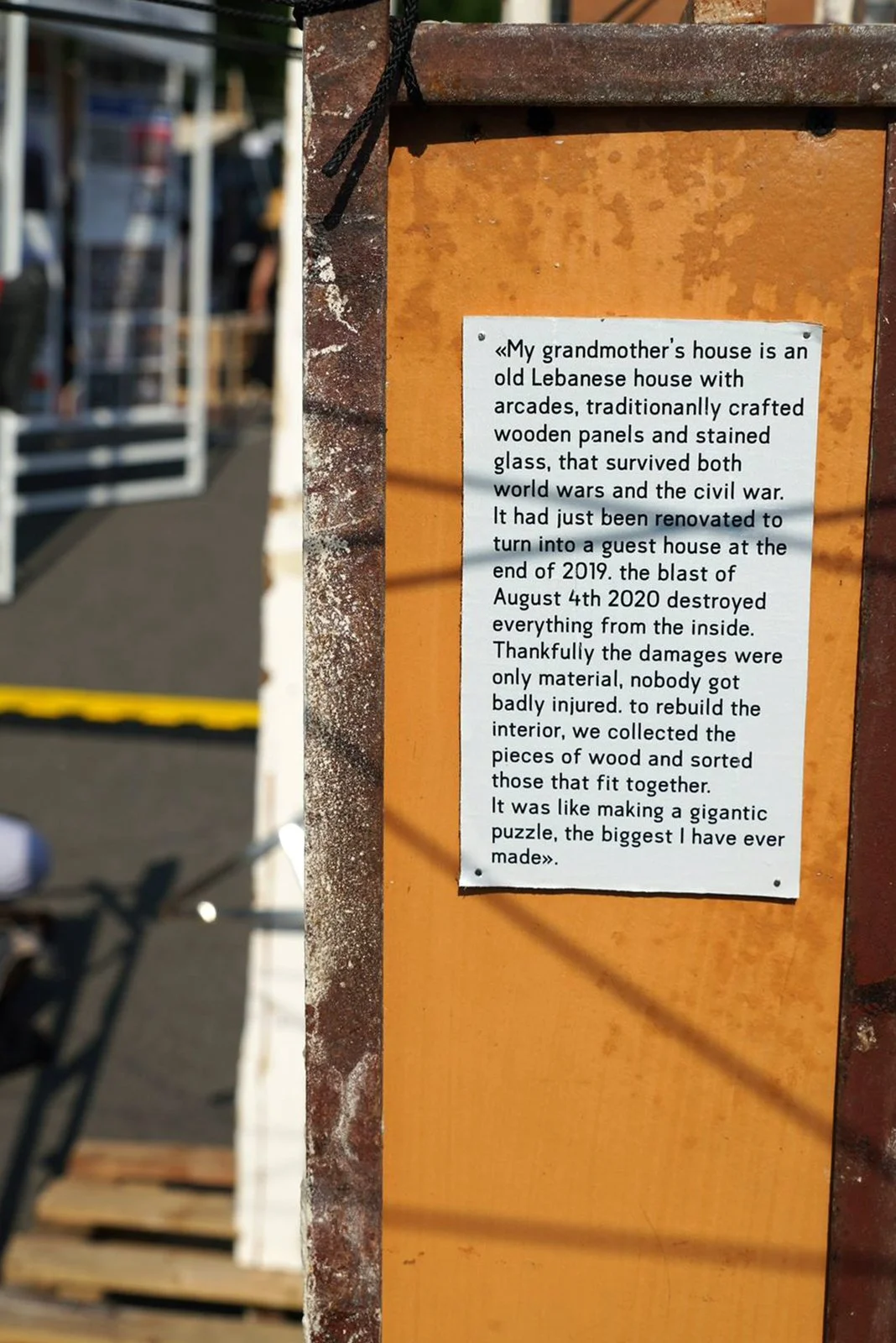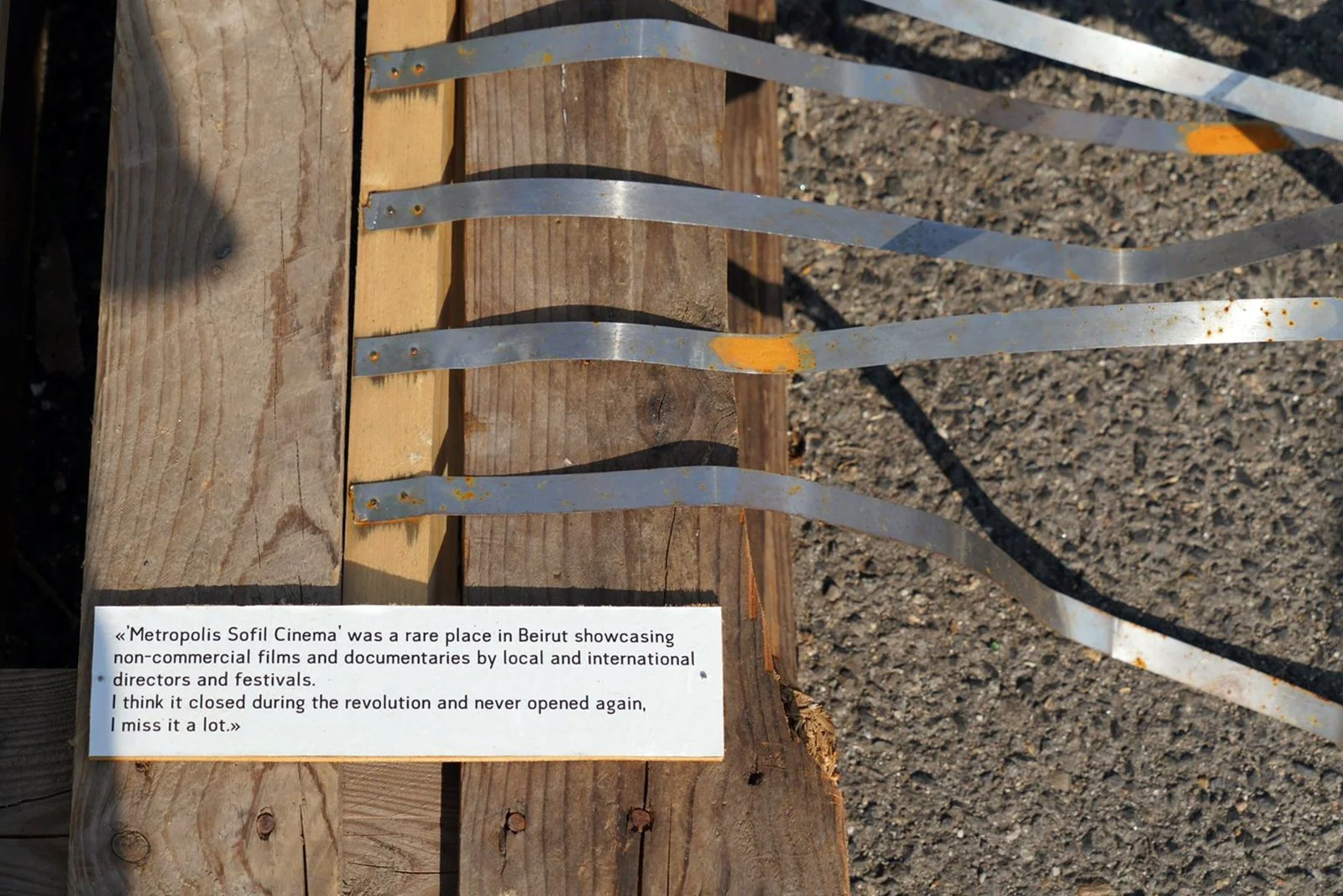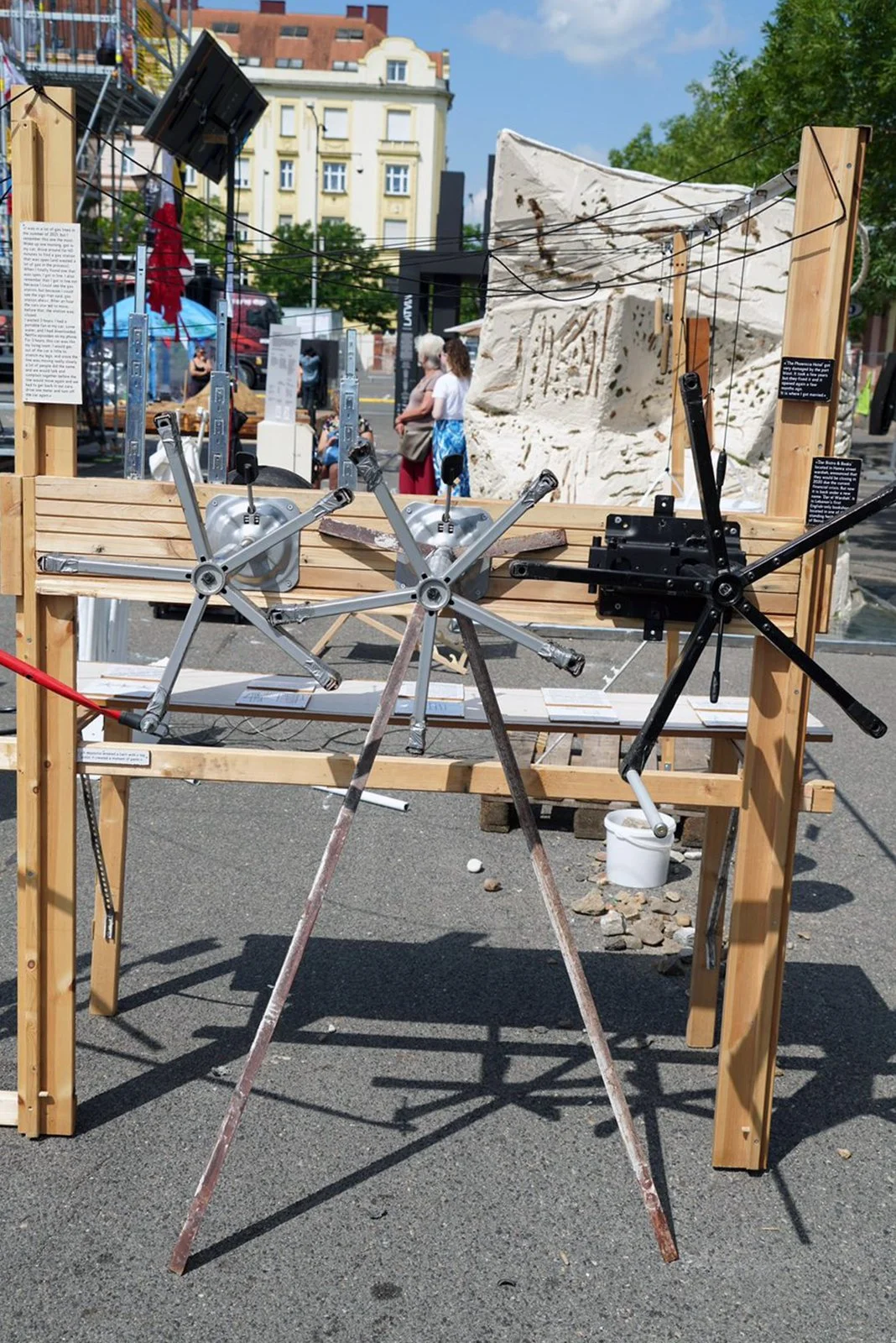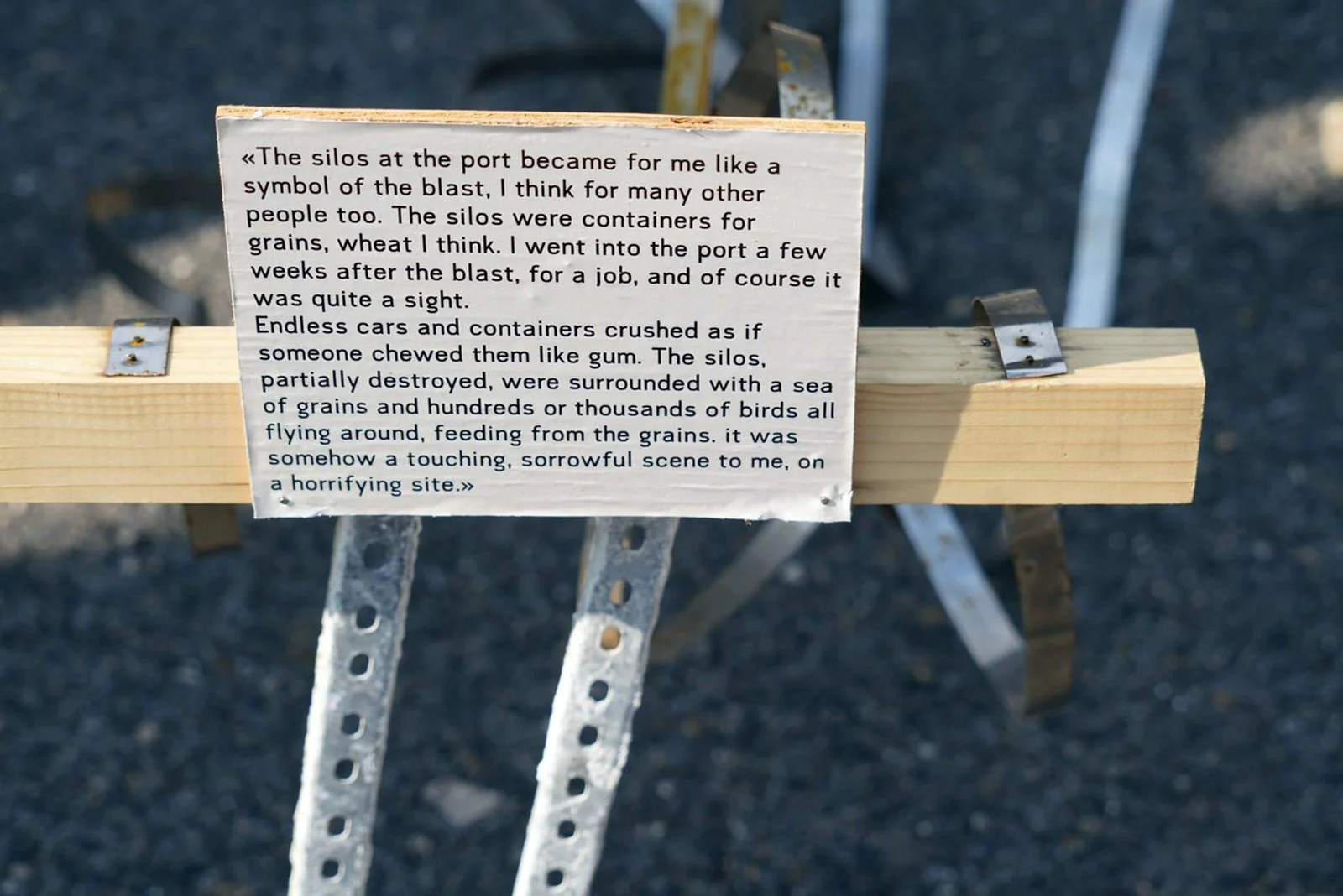The last edition of PQ ended in June 2019, less than 4 months before the nation-wide protests of October 17, the financial collapse of the country, the COVID pandemic, the Beirut Port Explosion of August 4, 2020, and the politico-socio-economic collapse that is still ongoing. Out of decency and respect to this situation, we limit the participation of Lebanon in PQ2023 to the Exhibition of Countries and Regions designed by Charbel Samuel Aoun, and the Student Exhibition designed by Mara Ingea.
Puzzles
– The Student Exhibition
The Student Exhibition of Lebanon connects five stations made of upcycled objects and simple mechanisms, for visitors to interact with and put in motion to the chaotic stories of Beiruti residents.
In the aftermath of PQ2019, Lebanon started witnessing a succession of crises and catastrophes that have been reshaping its society, economics, and landscapes. The capital Beirut has been particularly affected, witnessing simultaneously social uprisings, a pandemic, the third-largest explosion in modern history, and different kinds of shortages. This series of provocations has influenced the way we navigate daily life, and has affected our perception of the space in constant modification.
To reflect the complexity of daily life in Lebanon and the transformations that the city has undergone in the past four years, the Student Exhibition represents five recent happenings through five interconnected elements that form one big “machine”. These elements refer to:
The Beirut Port Explosion of August 4, 2020 that destroyed a big part of the city
The citizens coming together to clean the streets after the Explosion
The change and vanishing of numerous places due to the crisis
The constant vibration of the city through people’s actions and initiatives
The new ephemeral spaces and soundscapes of the 2019 Protests
The stations are made of upcycled objects and materials, assembled into simple mechanisms that involve turning, pulling, putting, or removing. Visitors follow basic instructions to activate the mechanisms and set the installation in motion. As the participation of visitors influences the transformation of the space, some changes happen on the spot, while others happen over time and repetition. In this mix of playfulness, emotionality, and absurdity, the “machine aesthetics” enhances the principle of action and reaction, highlighting the complicated effort that every simple daily activity has become today in Lebanon due to the malfunctioning of the system. The exhibition demonstrates how a simple action could require a big effort, and how something big could arise from almost nothing. The exhibition is big enough for people to walk around its stations, and discover them from different sides.
The installation is entirely made of upcycled objects and materials. The latter reduce waste, and give a new life to objects that might seem obsolete. Upcycling is also a means to produce art on a tight budget. Although it might look like a process that restricts creative freedom, upcycling gives way for imagination to produce ideas out of random encounters, and to leverage the existing attributes of objects, instead of producing new ones to serve a similar function. This process is also representative of the situation in Lebanon, where unrelated elements sometimes combine to form complex, social, political, and economical situations. Retracing and understanding the recent Lebanese events compares to putting together pieces of a puzzle, just as it has been necessary to combine materials and recompose structures The installation is entirely made of upcycled objects and materials. The latter reduce waste, and give a new life to objects that might seem obsolete. Upcycling is also a means to produce art on a tight budget. Although it might look like a process that restricts creative freedom, upcycling gives way for imagination to produce ideas out of random encounters, and to leverage the existing attributes of objects, instead of producing new ones to serve a similar function. This process is also representative of the situation in Lebanon, where unrelated elements sometimes combine to form complex, social, political, and economical situations. Retracing and understanding the recent Lebanese events compares to putting together pieces of a puzzle, just as it has been necessary to combine materials and recompose structures and buildings every time the city was destroyed or drastically changed.
Amidst the five stations, the exhibition displays stories and anecdotes from residents of Beirut. The texts mention places that disappeared or were changed, and highlight quirky everyday moments that the current situation has been altering for the past four years. These texts concern the mechanical movements of the machine, and give voice to the Lebanese to provide context for the visitors.
As the residents of Lebanon have been forced to wait for hours to access basic needs such as buying bread, withdrawing money from the bank, filling their car with gas, or getting appointments to renew their passports, transitory places like crowds, queues, and traffic jams develop, persist, and dissipate. Due to shortages and State disfunction, these types of spaces could not be avoided, which pushed the Lebanese to get creative and find alternative ways to wait while ensuring they do not lose their position in the line. To immerse visitors in this reality, and offer them a taste of ephemeral places that emerge in times of crisis, the Student Exhibition hosts 3 live events, whereby participants wait together, and partake in the performative aspect of daily routines turned into urban adventures, courtesy of the continuous Lebanese socio-economical crisis, in observation of new types of spaces that emerge during times of crisis.
Some OF THE stories that ARE displayed in the Student Exhibition of Lebanon:
Mara Ingea
Designer of the Student Exhibition of Lebanon
With a background in visual arts and animation, Mara Ingea has been taking her artistic path from object making to performing arts, combining different media and disciplines. Her recent work lies on the border between installation and performance, and the situations she creates are often interactive, inviting audience members to get involved in the artwork either by reflecting about the proposed theme or by actively taking part in it. Her connections to an international creative scene place her work in an actual and up to date context, and has led her to collaborate with artists from all over the world as director, performer and set and costume designer. Recently, maybe influenced by the constantly changing Beirut, city where she grew up, she has grown an interest for space transformation. The questions of memory and ephemerality of a place, fictional spaces within real ones, or unusual behaviors in public spaces have been recurring themes in her latest projects. Mara is Lebanese and lives in Prague. www.maraingea.cargo.site
Natasha Karam
Research and Dramaturgy Consultant for the Student Exhibition of Lebanon
Natasha Karam is a multidisciplinary creative practitioner based in Lebanon. She dances between movement, images, words, and sounds, as a medium to question herself and her environment. Her focus mostly falls on the intersection between the human and natural world, and the beauty existing in everyday life. As a visual artist, Natasha has participated in various group exhibitions in Lebanon and Scotland, with the most recent being part of Art Design Lebanon in December 2021, where she presented a mixed media installation, reflecting on the production of olive oil in time and space. As a movement artist, she initiated a short dance film supported by Maqamat and entitled Turbulent flow (2021), featured in the 2022 Bipod Festival, in which she figures as dancer and choreographer. She was selected as a participant artist in the Precipitate program organized by Yaraqa and DanseBase in October 2022. In late 2022, Natasha performed as a dancer and co-creator in Body Watani’s ongoing project Terranea, led by Leila Awadallah. Most recently, she was selected as dancer and performer in Beirut Physical Lab’s project with Bassam About Diab and Simea Cavelti.
The STUDENT Exhibition
The Student Exhibition presents creative interventions that take inspiration from local knowledge, local culture and identity. The participating students/emerging designers create an exhibition or an immersive experience space based on or inspired by the unique process of transformation of imagination into new and RARE works of performance design and scenography. The students focus on distinctive experiences in their hoods and motherlands, juicing their cultural knowledge and charms, translating them into visionary works in performance design with special emphasis on modern methods of digitalization and audience engagement. The exhibition presents striking work of emerging designers that braves new thought, stimulates the imagination, and provokes strong reactions. Similar to the National exhibition, the Student Exhibition is competitive as well, and designers are selected by the national curator. 46 exhibitions constitute the body of the Student Exhibition in PQ2023.
Evolution of the Student Exhibition of Lebanon
The Student Exhibition of Lebanon is designed by Mara Ingea, a Lebanese student based in Prague. The exhibition demonstrates the vital support that the Lebanese diaspora offers to the country, and that Mara embodies very well.
The exhibition also benefitted from the desire of PQ2023 to safeguard the participation of Lebanon when funding was impossible to find because of the Lebanese financial collapse. To this end, PQ Exhibitions Manager Magdaléna Brožíková offered us the option to waive our participation fees, to which we are grateful.
This last-minute solution that was made possible thanks to the offering of the Prague Quadrennial and the support of Mara Ingea speaks to the relationship that Lebanon has been building with the Prague Quadrennial since 2011. It promises strong continuity and broader horizons.
Hadi E. Damien
Curator of Lebanon





















